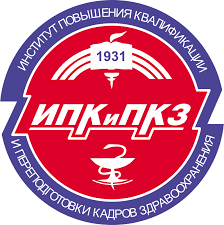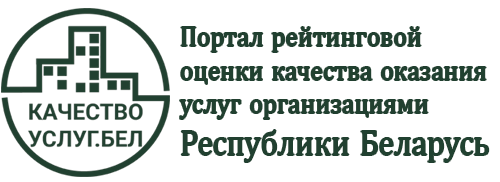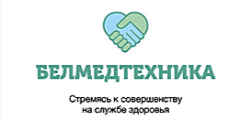Functional diagnostics
1. Electrocardiography
2. Electrocardiotopography
This study makes it possible to define the location and size of ischemic damage areas and adjacent parts of the right cardiac ventricle.
3. Rheographic studies
4. Study of the external respiration function (spirometry and pneumotachometry)
The pulmonary ventilation function is assessed to reveal individuals at high risk of developing pulmonary diseases, to diagnose chronic obstructive bronchitis, bronchial asthma and other pulmonary diseases, and also to efficiently treat them.
Preparation
- the study is made in the morning on an empty stomach or 2 hours after a meal;
- not to take bronchodilators 4 hours before the study.
5. Doppler ultrasonography of peripheral, intracranial and extracranial vessels
6. 24- hour monitoring of ECG and/or arterial pressure
Electrocardiogram is recorded, and/or arterial pressure is automatically measured during 1-3 days to detect cardial rhythm disturbances, ischemic myocardium changes and to evaluate the efficacy of treatment for the above conditions.
Preparation
-
Having with you two penlite AA batteries, and a shaving stick for men.
Contraindications
-
Skin rash on the front chest surface; absence of contact with the patient.
7. Functional brain studies
Functional brain studies are conducted:
- prior to whole-body hyperthermia treatments;
- in examinations of patients with vascular and volumetric cerebral affections;
- in neurosurgical patients to detect the threshold of brain convulsion readiness;
- in administration of anticonvulsive therapy in pre- and postoperative period;
- in patients with brain diseases of various ethiology;
- in patients with concomitant diseases (cerebral atherosclerosis, arterial hypertension, diabetes mellitus) to define the compensatory potential of cerebral blood circulation in the stress setting (narcosis, surgery, aggressive chemoradiotherapy).
8. Electroencephalography
Bioelectric brain activity is recorded to assess its functional state. The procedure is indicated for loss of consciousness, convulsive attacks, craniocerebral injuries, etc.
Contraindications
- head tumor;
- presence of fresh head wounds;
- absence of contact with the patient.
9. Echoencephalography
Exercise therapy, massage and physical therapy play an important role in prevention, treatment and rehabilitation of cancer patients. The appropriate treatment is administered in close co-operation with oncologist doctors.
10.Exercise therapy
Exercise therapy is a complex of methods for treatment, prevention and medical rehabilitation based on employment of physical exercises specially sorted out and methodologically designed for prevention-and-treatment purposes. The modality is based on utilizing the principal biological body function–motion.
11. Massage
Medical massage is a dosed mechanical treatment of patient’s soft tissues using special techniques performed by a trained person in a specific succession.
12. Magnetotherapy
Magnetotherapy (whole-body and local) makes it possible to improve general well-being, to enhance resistance to various unfavourable factors and to activate the compensatory potential of the body.
Magnetotherapy is associated with various clinical effects, including:
- antitumor effect caused by the activation of cellular immunity;
- activation of tissue and vascular regeneration;
- pain relief;
- hypotensive effect;
- improvement of peripheral blood flow and lymph outflow;
- stimulation of hematosis;
- normalization of metabolic processes.
Systemic magnetotherapy is conducted on Magnitoturbotron unit.
Indications for use:
- undergoing a course of radio-chemotherapy (to prevent or reduce its damaging side effects);
- in inoperable conditions to alleviate the pain syndrome;
- mastopathy with no indications for surgery;
- improving the patient’s psychophysical and emotional condition; sleep disturbance;
- diseases of internal organs and systems of various etiology.
Indications for use:
- stimulation of muscles with lymphedemas, urinary bladder atony, stimulation of anal sphincter after surgical interventions;
- diseases and injuries of the peripheral nervous system and locomotorium.
13. Magnetolaserotherapy
Indications for use:
- management of trophic ulcers, persistent nonhealing infectious wounds, burns (including radiation-related);;
- obliterative diseases of peripheral vessels;
- supravenous immunomodulation;
- locomotorium diseases;
- esthetic medicine (cheloid cicatrices), cosmetology and sports medicine.
14. Electrotherapy
Indications for use:
- injuries and diseases of the peripheral nervous system and locomotorium;
- acute and chronic pain syndrome of various etiology;
- introduction of drug substance ions (including chemotherapeutic agents) into the body.
15.EHF therapy
Indications for use:
- courses of chemoradiotherapy associated with leukopenia and thrombocytopenia;
- dull regeneration processes after surgical interventions;
- inflammatory and degenerative diseases of joints and spine;
- subacute and chronic diseases of internal organs and systems;
- obliterating diseases of extremity vessels.
16. Pneumocompression therapy
Indications for use:
- prevention of the development of upper and lower extremity lymphedemas, venous insufficiency;
- rehabilitation after surgical treatment of joints and vessels;
- management of diabetic polyneuroangiopathy;
- management and prevention of cellulitis.
16. Ultrasonic therapy
Indications for use:
- neurologic manifestations of spinal osteochondrosis;
- diseases and aftereffects of injuries of the peripheral nervous system and locomotorium;
- cheloid cicatrices.
17. Phototherapy
Indications for use:
- management of wounds (post-traumatic, surgical), burns, ulcers, bed sores;
- acute and chronic diseases of the arthromuscular apparatus;
- dermatologic diseases of various etiology (including herpetic affection);
- management and prevention of upper airways infections;
- season-related depression;
- cosmetology.












